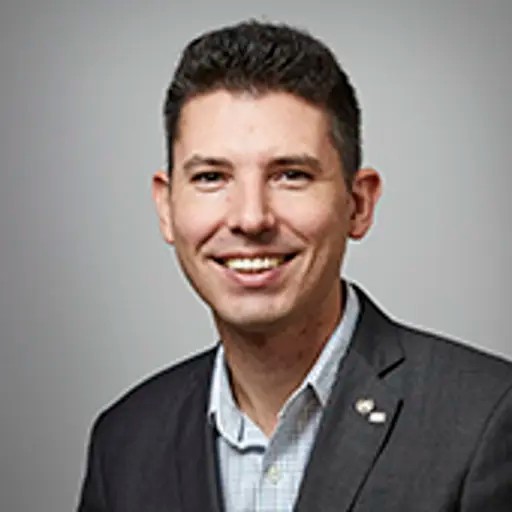Course syllabus adopted 2021-02-08 by Head of Programme (or corresponding).
Overview
- Swedish nameElektromagnetiska fält och optiska material: fysik och tillämpningar
- CodeTIF335
- Credits7.5 Credits
- OwnerMPPHS
- Education cycleSecond-cycle
- Main field of studyEngineering Physics
- DepartmentPHYSICS
- GradingTH - Pass with distinction (5), Pass with credit (4), Pass (3), Fail
Course round 1
- Teaching language English
- Application code 85131
- Maximum participants40 (at least 10% of the seats are reserved for exchange students)
- Block schedule
- Open for exchange studentsYes
Credit distribution
Module | Sp1 | Sp2 | Sp3 | Sp4 | Summer | Not Sp | Examination dates |
|---|---|---|---|---|---|---|---|
| 0119 Examination 7.5 c Grading: TH | 7.5 c |
|
In programmes
Examiner
 Philippe Tassin
Philippe Tassin- Professor, Condensed Matter and Materials Theory, Physics
Eligibility
General entry requirements for Master's level (second cycle)Applicants enrolled in a programme at Chalmers where the course is included in the study programme are exempted from fulfilling the requirements above.
Specific entry requirements
English 6 (or by other approved means with the equivalent proficiency level)Applicants enrolled in a programme at Chalmers where the course is included in the study programme are exempted from fulfilling the requirements above.
Course specific prerequisites
Introductory courses in: linear algebra, complex calculus, differential equations, classical mechanics, and electromagnetism.Aim
The course aims to provide the students with a firm understanding of the physics and applications of electromagnetic fields and optical materials. Electromagnetic waves are arguably one of the most important concept of physics in modern societyenabling fundamental scientific breakthroughs like the detection of elementary particles as well as being the foundation of numerous industrial, medical, and consumer applications.
The students will first learn how charged particles move in electromagnetic fields, with applications in thermonuclear fusion and mass spectroscopy. The course will then proceed with a study of the optical radiation emitted by moving charged particles and when charged particles interact with materials. This will lead to an understanding of phenomena such as synchrotron radiation, Cherenkov radiation, and bremsstrahlung, and their importance for, e.g., materials science and astrophysics.
The second part of the course aims to deepen the students knowledge of optical waves interacting with various materials, highlighting their importance for applications in photonics and laser technology. In this way, the course will enable the students to understand state-of-the-art devices and prepare the students to participate in next-generation electromagnetic and photonic technology.
Learning outcomes (after completion of the course the student should be able to)
- Understand the importance of electromagnetic fields and waves in physical science and technology;
- Describe and understand the behaviour of charged particles in electromagnetic fields, the radiation emitted by charged particles, and the interaction of charged particles with materials;
- Describe and understand the propagation of electromagnetic waves in various optical media, such as dielectrics, metals, semiconductors, anisotropic crystals, nonlinear optical media, etc.;
- Make quantitative predictions of the above physical phenomena;
- Relate the macroscopic properties of optical media to their internal microscopic properties;
- Know and understand applications of electromagnetic fields and optical materials in different application areas including optics, materials characterization, astrophysics, and elementary particle detection;
- Apply basic theoretical models to real optical devices and experiments;
- Be acquainted with contemporary research fields related to electromagnetic fields and optical materials.
Content
PART 1: Introduction
- Microscopic Maxwell's equations and electromagnetic waves, including polychromatic fields; polarization; coherence
PART 2: Charged particles interacting with electromagnetic fields and materials
- Particles in uniform and nonuniform electric and magnetic fields; drift
- Radiation by moving charged particles, including synchrotron radiation and Cherenkov radiation
- Collisions of charged particles with materials; energy loss
- Bremstrahlung
PART 3: Optical waves in macroscopic materials
- Macroscopic Maxwell's equations
- Optical waves in dielectrics and metals; dispersion; absorption; surface waves and polaritons
- Scattering on small particles, including cross sections; optical theorem; Mie scattering; basics of multipole analysis
- Microscopic models of dielectric functions
- Optical forces
- Optical waves in anisotropic crystals
- Electro-optics and nonlinear optics
Organisation
The course consists of lectures, problem-solving sessions, guest lectures about contemporary physics research, and a project involving for example a computer calculation related to contemporary physics research or technology. Attendance at the guest lectures and conference is compulsory.
Literature
The course literature comprises handouts provided by the lecturers and excerpts from the following books:
- Classical Electrodynamics by J. D. Jackson (Wiley, 1998);
- Optical Waves in Crystals: Propagation and Control of Laser Radiation by A. Yariv and P. Yeh (Wiley, 2002);
- Absorption and Scattering of Light by Small Particles by C. F. Bohren and D. R. Huffman (Wiley, 1983).
Examination including compulsory elements
Students will be examined by way of (1) compulsory assignments to be handed in during the course; (2) a compulsory oral exam at the end of the course; (3) the students' performance on the project and their presentation at the compulsory conference. To receive any passing grade (3, 4, or 5), at least that grade must be earned both on the assignments and on the oral exam, as well as a passing grade on the project.
The course examiner may assess individual students in other ways than what is stated above if there are special reasons for doing so, for example if a student has a decision from Chalmers about disability study support.